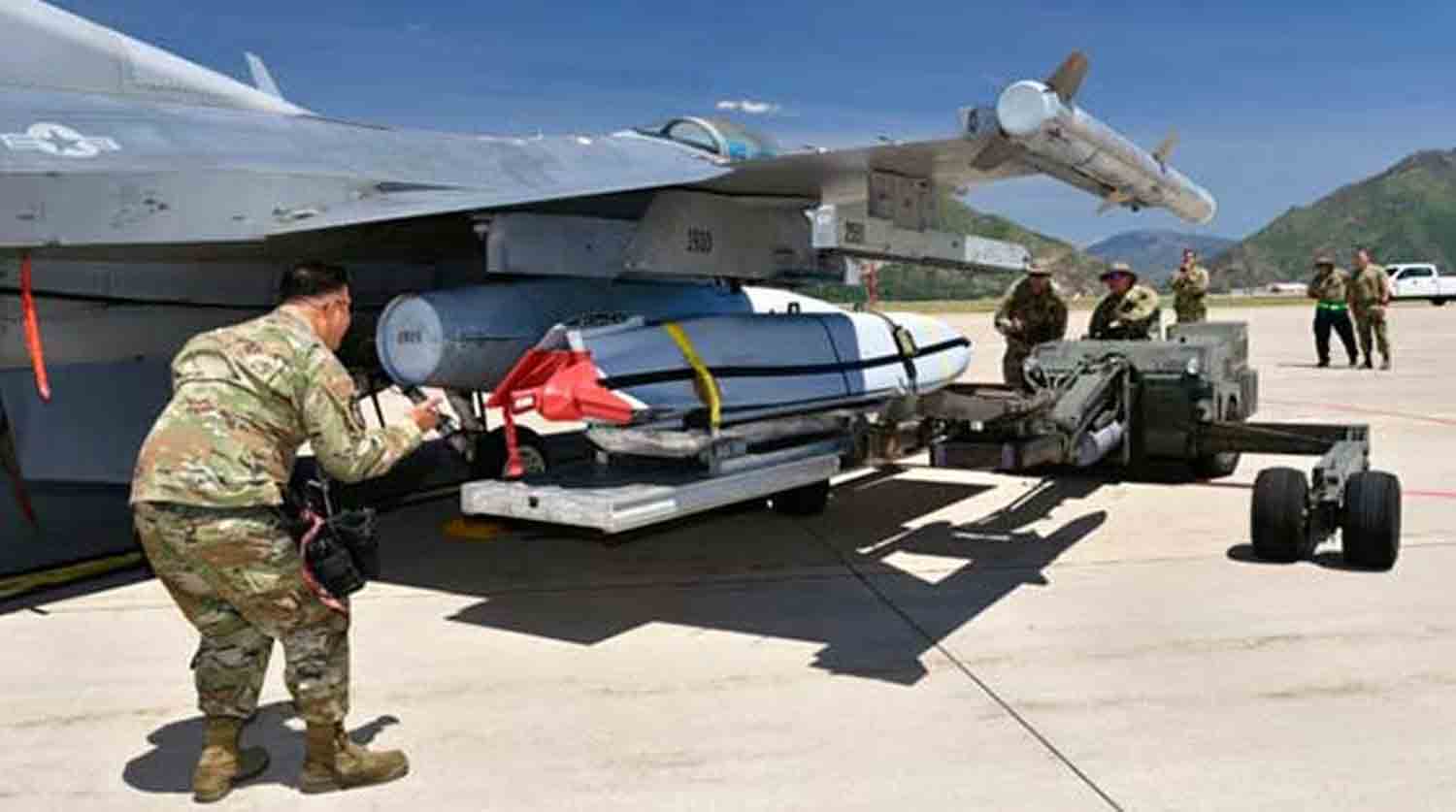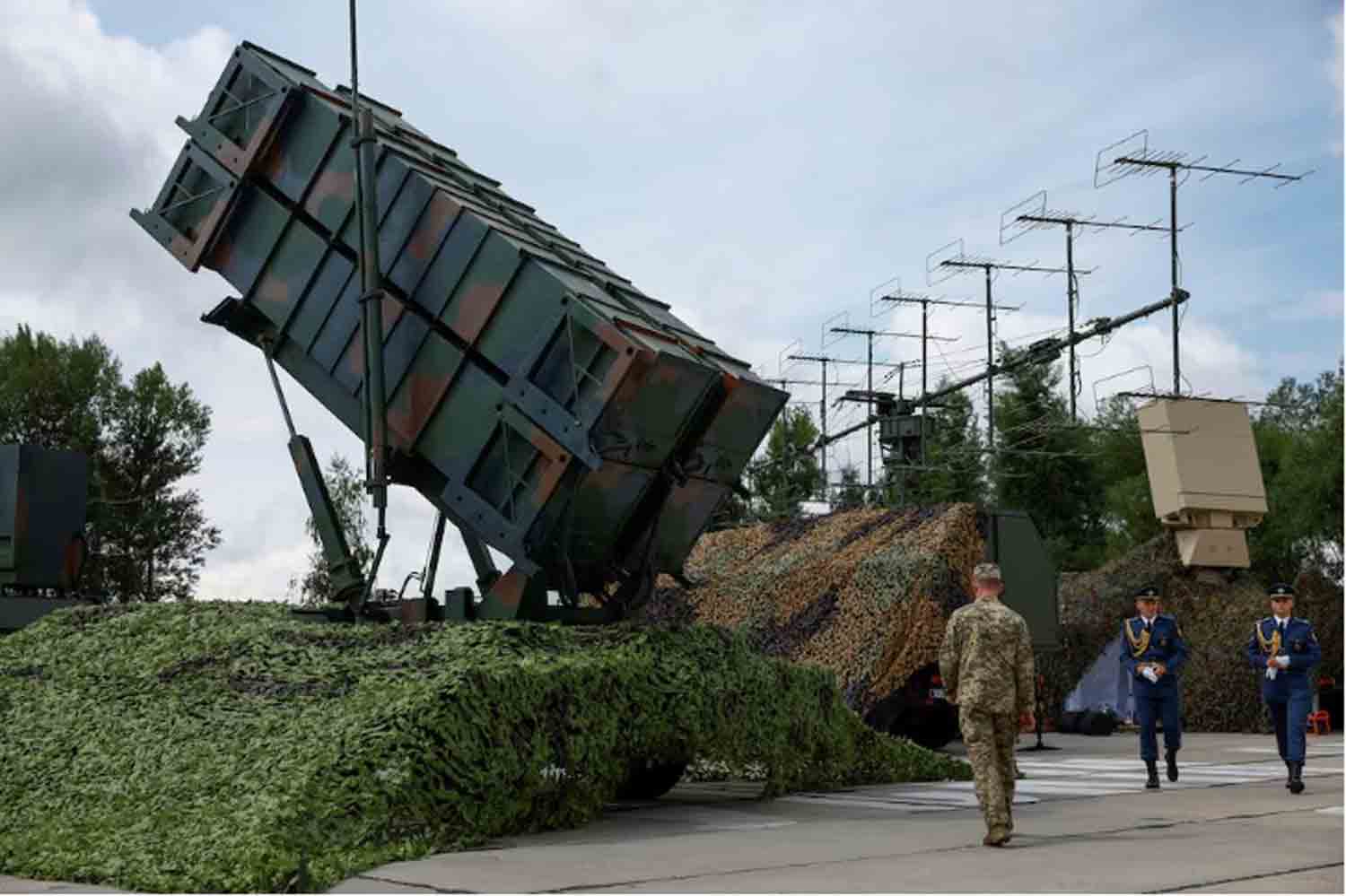In a strategic initiative that enhances its standing in the global defense sector, Lockheed Martin’s Missiles and Fire Control division, located in Orlando, Florida, has secured a substantial contract modification valued at $24 million. This modification extends a previously awarded contract, elevating the total cumulative value to an impressive $3.25 billion.
This contract focuses on the procurement of large quantities of Joint Air-to-Surface Standoff Missiles (JASSM) and Long-Range Anti-Ship Missiles (LRASM), representing a significant advancement in the arsenal of the U.S. Air Force and allied forces regarding advanced standoff weaponry.
The modification, designated as P00002 under contract FA8682-24-C-B001, aims to ensure the necessary tooling, training, and maintenance for the production of these sophisticated munitions. These missiles embody state-of-the-art technology in their fields, providing essential capabilities for long-range strike missions and anti-ship operations.
The JASSM is a long-range air-launched cruise missile that delivers exceptional precision for strikes against high-value targets from standoff distances, enabling aircraft to operate beyond enemy defenses. Beyond its primary air-to-surface function, JASSM’s precise targeting and stealthy characteristics render it a flexible asset for both tactical and strategic strike missions.
The LRASM is an advanced anti-ship missile specifically engineered to target and incapacitate enemy naval forces from long distances.
This missile is particularly distinguished by its capability to function in contested environments, utilizing autonomous targeting technology that allows it to locate and eliminate adversarial vessels even in the absence of traditional targeting information.
The modification of the contract will primarily take place in Orlando, Florida, with an expected completion date of January 31, 2028. A key feature of this agreement is the incorporation of Foreign Military Sales (FMS), a U.S. government initiative aimed at facilitating the transfer of American defense equipment to allied nations.
The nations set to benefit from this acquisition include Poland, the Netherlands, Finland, and Japan, representing a significant extension of these vital missile systems beyond the United States and NATO allies.
For these countries, the procurement of the JASSM and LRASM signifies a major enhancement of their military capabilities. As global security landscapes shift, the ability to conduct precision strikes from standoff ranges will greatly improve their defensive and offensive operational effectiveness.
The U.S. Air Force Life Cycle Management Center (AFLCMC) at Eglin Air Force Base in Florida is responsible for overseeing the execution of the contract, ensuring that these munitions remain ready and effectively integrated into the arsenals of the United States and its international allies.
As Lockheed Martin advances the production and operational capabilities of the Joint Air-to-Surface Standoff Missile (JASSM) and the Long Range Anti-Ship Missile (LRASM), the implications for global defense strategies are significant. These missile systems enhance the offensive and defensive capabilities of the U.S. military while also empowering allied nations to sustain a credible deterrent against potential threats.
In light of rising tensions in areas such as the Indo-Pacific and Eastern Europe, both JASSM and LRASM are set to play crucial roles in enabling U.S. allies to protect their interests and effectively counter sophisticated challenges posed by near-peer adversaries.
The recent $24 million modification is a small part of a broader initiative aimed at developing standoff missile capabilities. As countries modernize their military arsenals in response to changing threats, Lockheed Martin’s expertise and missile systems are vital in shaping the future landscape of air and naval warfare.
The inclusion of JASSM and LRASM in the military inventories of Poland, the Netherlands, Finland, and Japan reflects a wider commitment to establishing a robust and resilient defense posture against emerging global threats.
Lockheed Martin’s sophisticated missile systems, such as the JASSM and LRASM, are not merely state-of-the-art technologies; they signify the evolution of precision warfare, enabling power projection over unprecedented distances while significantly reducing risks to personnel and equipment.
As production increases and international sales grow, these missile systems are poised to play a crucial role in defining the future landscape of military operations.
Poland, a nation that is reaping the benefits of acquiring JASSM and LRASM, operates the F-16 Fighting Falcon, a highly adaptable multirole fighter that seamlessly integrates with these advanced missile systems. The F-16 is essential to Poland’s air force, providing the capability to target high-value assets from standoff ranges, thereby ensuring safety from enemy defenses.
With the incorporation of JASSM, Polish F-16s will enhance their ability to execute precision strikes on various ground targets, bolstering the country’s defense posture.
In a similar vein, the Netherlands utilizes both the F-35 Lightning II and the F-16 Fighting Falcon to deploy these advanced munitions. The F-35, recognized for its stealth features and cutting-edge avionics, is particularly adept at launching JASSM and LRASM.
The Netherlands’ shift to the F-35 will greatly enhance its capacity for executing long-range strikes with exceptional precision. At the same time, the F-16 remains a vital component of the Dutch air fleet, maintaining compatibility with JASSM and continuing to play a crucial role in the nation’s strategic air operations.
Finland’s air force utilizes the F/A-18 Hornet, a versatile fighter that is central to its defense strategy. This aircraft can carry both JASSM and LRASM, positioning it as a powerful asset for engaging both land and sea targets.
Finland’s modernization efforts ensure that the F/A-18 will be outfitted with the latest advancements, thereby improving its effectiveness in both defensive and offensive missions.
In Japan, the F-15J Eagle and F-35 Lightning II form the core of the country’s air combat capabilities. The F-15J, an enhanced variant of the U.S. F-15, is equipped to carry JASSM and LRASM, making it a formidable option for long-range precision attacks.
Conversely, the F-35, a state-of-the-art stealth fighter, will be capable of deploying these advanced missiles with superior accuracy and efficiency. With both aircraft in its arsenal, Japan significantly bolsters its ability to project power and safeguard its interests in a rapidly evolving security landscape.
The integration of these aircraft guarantees that the JASSM and LRASM missile systems will be seamlessly incorporated into the defense frameworks of Poland, the Netherlands, Finland, and Japan.
As these countries advance their air force capabilities, the addition of these sophisticated missile systems significantly boosts their capacity for precise, long-range operations, thereby enhancing regional stability and defense preparedness.
The Joint Air-to-Surface Standoff Missile (JASSM) is a long-range, precision-guided missile crafted to empower air forces with the capability to engage high-value, fortified, and strategic targets from standoff distances, well beyond the reach of most adversary air defenses.
Featuring a robust and stealthy design, JASSM is engineered to evade detection and penetrate even the most advanced defense mechanisms. Its extended range and cutting-edge targeting systems enable it to effectively engage both stationary and mobile targets, whether on land or at sea.
The missile’s guidance system utilizes a blend of GPS-aided inertial navigation and infrared homing, ensuring precision even in scenarios where GPS signals may be compromised or unavailable.
This adaptable missile can be deployed from a range of aircraft platforms, including the B-2 Spirit, B-1B Lancer, F-15E Strike Eagle, and F-16 Fighting Falcon, among others.
Over the years, the JASSM has undergone continuous enhancements, with the latest variant, the JASSM-ER (Extended Range), offering increased range and improved capabilities, solidifying its role as a vital component in contemporary military inventories.
The Long-Range Anti-Ship Missile (LRASM) represents a state-of-the-art, precision-guided weapon system engineered for long-distance engagements against enemy naval vessels. This missile incorporates advanced sensor technology, including an onboard infrared seeker, enabling it to detect and target adversarial ships even in conditions characterized by significant electronic disruption.
Designed specifically for high-intensity naval combat, LRASM is capable of striking enemy ships from considerable distances, reducing reliance on real-time targeting data. It can autonomously navigate and engage maritime targets, even when communication links with the launch platform are disrupted or unavailable.
With its streamlined, low-observable profile, the missile is challenging for enemy defense systems to detect and intercept. It can be deployed from various platforms, including the B-1B Lancer, B-52 Stratofortress, and naval systems like the Mk 41 Vertical Launch System (VLS).
Moreover, the F/A-18 Super Hornet and F-35 Lightning II are also equipped to carry and launch the LRASM, enhancing its operational versatility across different military branches.
The capability of LRASM to target maritime threats at extended ranges while functioning in contested environments positions it as an essential asset for contemporary naval operations and anti-ship tactics.
Discover more from Defence Talks | Defense News Hub, Military Updates, Security Insights
Subscribe to get the latest posts sent to your email.





